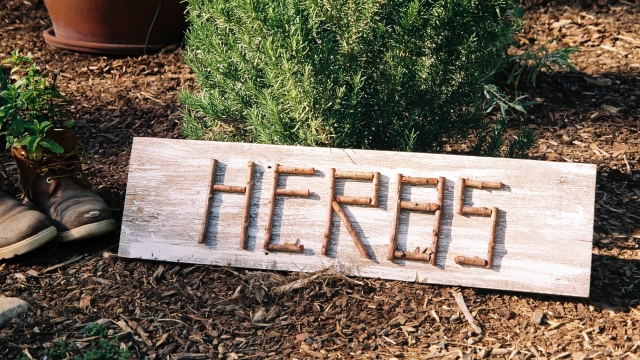Welcome to the world of gardening, where the delicate beauty of flowers meets the functional benefits of companion planting. When it comes to calendula, a vibrant and versatile herb, finding the perfect companion plants to create a harmonious garden bed can truly elevate your gardening experience. Not only do these companion plants provide aesthetic appeal, but they also offer practical benefits such as natural pest control, improved soil health, and increased biodiversity. In this article, we will explore the enchanting world of calendula companion plants, helping you discover the ideal botanical partners to cultivate a thriving and sustainable garden. Plus, we’ll even reveal a handy tip on how to make your own mulch using calendula flowers. So, let’s dive into the fascinating realm of companion planting and uncover the secrets to achieving floral harmony in your garden.

For over nine decades, "Kellogg Garden" Products has operated as a family-owned and operated company deeply rooted in the values of integrity, innovation, loyalty, experience, commitment, and generosity. With our vast experience and expertise in gardening, we strive to provide you with reliable advice and high-quality products that will enrich your gardening journey. From our humble beginnings in 1925 to becoming a trusted name in the industry, we take pride in offering you the tools and knowledge needed to create flourishing gardens. So, let’s embark on this botanical exploration together, as we uncover the perfect calendula companion plants that will elevate your gardening endeavors to new heights.
The Benefits of Companion Planting with Calendula
Calendula, also known as marigold, is a versatile herb that brings a touch of beauty and functionality to any garden. When it comes to the art of companion planting, calendula proves to be an exceptional ally. Its vibrant golden petals not only add a pop of color to your garden, but they also offer a host of benefits for surrounding plants.
One of the key advantages of planting calendula alongside other herbs and flowers is its pest control prowess. Calendula contains natural compounds that repel harmful insects, such as aphids, whiteflies, and nematodes. By intermingling calendula with your favorite herbs, you can create a natural barrier that protects your plants from these unwanted pests.
In addition to its pest-repellent properties, calendula acts as a complementary partner by attracting beneficial insects. Bees, butterflies, and other pollinators are drawn to the bright blooms of calendula, aiding in the pollination of nearby plants. This symbiotic relationship helps to increase the overall productivity and yield of your garden.
Furthermore, calendula can be utilized as a "living mulch" by suppressing weed growth and conserving soil moisture. Its broad leaves create shade, preventing sunlight from reaching weed seeds and hindering their germination. By planting calendula alongside your other herbs, you can reduce the need for excessive weeding and watering, saving both time and effort.
In conclusion, companion planting with calendula offers a multitude of benefits for your garden. From pest control to pollination, and even weed suppression, this remarkable herb proves its worth as an excellent companion for a variety of plants. By harnessing the power of nature’s harmony, you can create a thriving and balanced ecosystem in your own backyard.
Top Calendula Companion Plants
-
Marigolds
Marigolds are one of the most popular companion plants for calendula. These vibrant flowers not only add a splash of color to your garden but also serve as natural pest repellents. Their strong scent helps deter harmful insects like aphids, nematodes, and whiteflies, keeping your calendula plants safe from potential threats. Additionally, marigolds attract beneficial insects such as ladybugs and lacewings, which act as natural predators for many garden pests. -
Nasturtiums
Nasturtiums are another excellent choice as companion plants for calendula. These beautiful, trailing flowers not only create a stunning visual display but also offer multiple benefits to your garden. Nasturtiums act as a natural trap crop, attracting pests away from calendula plants and luring them into their vibrant blossoms instead. This helps protect your calendula from being attacked by pests, allowing it to thrive and flourish. Moreover, the flowers and leaves of nasturtiums are edible and can be used to enhance salads and other culinary creations. -
Lavender
Lavender is a fantastic companion plant for calendula due to its aromatic properties and insect-repellent qualities. The strong fragrance of lavender acts as a natural deterrent against many common garden pests, including aphids and moths. By planting lavender alongside your calendula, you not only create a visually pleasing combination of colors but also create an environment that helps keep harmful insects at bay. Additionally, lavender attracts pollinators such as bees and butterflies, which play a crucial role in the pollination process and enhance the overall health of your garden.
Remember, when selecting companion plants for your calendula, consider their compatibility in terms of sunlight, soil requirements, and overall growth habits. By choosing the right companions, you can create a harmonious and thriving garden bed that will benefit both your calendula and the surrounding plants.
Using Calendula as Mulch: Tips and Tricks
Calendula is not only a beautiful and versatile flower, but it can also be utilized as an excellent mulch in your garden. Here are some helpful tips and tricks for using calendula as mulch:
- Calendula Companion Planting
-
Natural Weed Suppression: One of the great advantages of using calendula as mulch is its ability to suppress the growth of weeds naturally. By covering the soil with a layer of calendula flowers, you can prevent weed seeds from germinating and taking over your garden beds. Plus, the bright and vibrant blooms of calendula will add a pop of color to your garden!
-
Moisture Retention: Calendula mulch acts as a natural barrier, helping to retain moisture in the soil. By placing a layer of calendula flowers around your plants, you can reduce evaporation and ensure that your plants receive adequate water. This is especially beneficial during hot summer months when water conservation becomes crucial.
-
Nutrient Boost: As the calendula flowers break down, they release valuable nutrients into the soil. This natural decomposition process enriches the soil, providing essential minerals and organic matter that promote healthy plant growth. Consider incorporating calendula as a regular mulching practice to improve the overall fertility of your garden.
In conclusion, harnessing the power of calendula as mulch can bring numerous benefits to your garden. From weed suppression to moisture retention and nutrient enrichment, calendula proves to be a valuable companion plant. Give it a try and experience the floral harmony in your garden!




